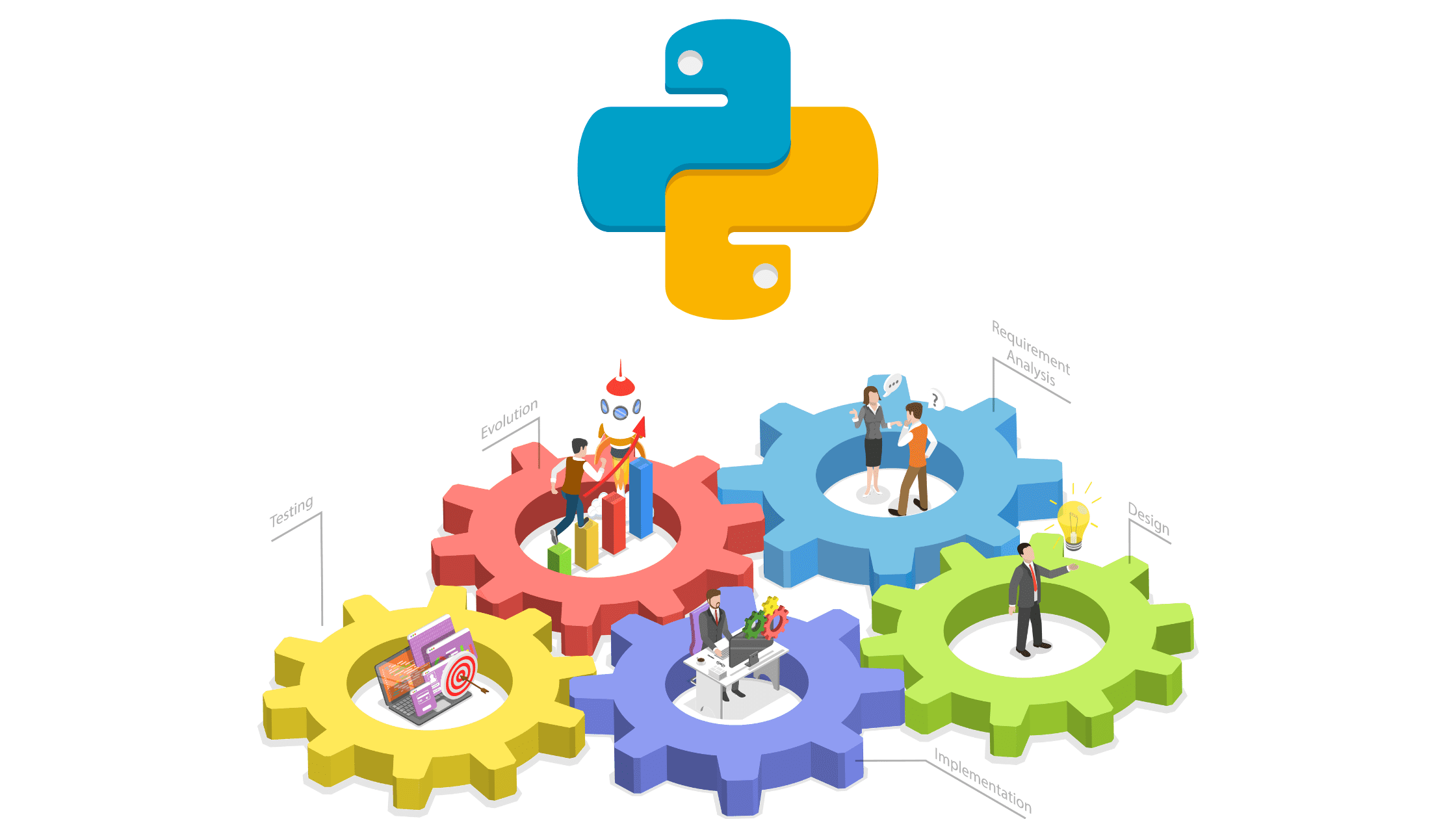Python became one of the fastest-growing programming languages. As per StackOverflow, Python is one of the most used programming languages in the world. One reason for its popularity is that Python has good tools for testing code. Python Testing Frameworks providing developers with the tools to automate testing processes and streamline the development workflow.
These tools help developers check their code carefully, find mistakes, and make sure their software works well. In this article, we delve into Python testing frameworks, exploring their features, advantages, limitations, and the optimal scenarios for their utilization. These testing tools are important because they make it easier to check code, find problems, and make sure everything works as it should.
What is a Python Testing Frameworks?
A Python testing framework is a set of tools, libraries, and conventions designed to facilitate the testing of Python code. These frameworks have tools like finding tests, running tests, showing results, and managing setups. They help developers write and run tests well. When testing is automated, Python frameworks make sure the code is good, catch problems early, and encourage a way of working where changes are made often and delivered quickly.
Python Frameworks for web development
Top Python Testing Frameworks Options of 2024
Here’s a list of the top Python testing frameworks options in 2024:
- Behave framework
- Lettuce framework
- Robot framework
- Pytest framework
- TestProject Framework
- PyUnit (Unittest) Framework
- Testify Framework
- Doctest Framework
- Nose2 Framework
- Locust Framework
Behave Framework
Advantages:
- Behavior-driven development (BDD) approach allows for collaboration between developers, testers, and stakeholders.
- Natural language support, enabling the creation of readable and understandable tests.
- Integration with popular tools like Selenium for web testing.
Limitations:
- Steeper learning curve compared to other frameworks due to its BDD paradigm.
- Limited community support and resources compared to more established frameworks like Pytest.
When to Choose: Behave framework is ideal for projects that prioritize clear communication and collaboration between technical and non-technical stakeholders. It shines in scenarios where test readability and natural language descriptions are crucial.
Lettuce Framework
Advantages:
- Like Behave, Lettuce follows a BDD approach, fostering collaboration and communication.
- Lightweight and easy to set up, making it suitable for small to medium-sized projects.
- Supports plain-text feature files, enhancing test readability and maintainability.
Limitations:
- Limited ecosystem and community support compared to more popular frameworks.
- Lack of advanced features and integrations available in other testing frameworks.
When to Choose: The lettuce framework is a good for teams looking for a lightweight BDD framework focusing on simplicity and readability. It’s particularly suitable for smaller projects or teams just getting started with BDD practices.

Robot Framework
Advantages:
- Highly extensible with a rich ecosystem of libraries and plugins for various testing needs.
- Keyword-driven testing approach, allowing for easy creation and maintenance of tests.
- Support for web and desktop application testing makes it versatile for different project requirements.
Limitations:
- Requires knowledge of its domain-specific language (DSL) for writing tests, which can be a barrier for newcomers.
- Overhead is associated with learning and configuring its DSL and ecosystem.
When to Choose: Robot Python testing frameworks is excellent for teams seeking a highly customizable testing solution supporting various technologies and application types. Its keyword-driven approach simplifies test creation and maintenance, particularly for testers with minimal programming experience.
Pytest Framework
Advantages:
- Simple and intuitive syntax, making it easy to learn and use for both beginners and experienced developers.
- Extensive plugin ecosystem, providing additional features and integrations for various testing needs.
- Detailed test reports and powerful assertion introspection aid in debugging and troubleshooting.
Limitations:
- Lack of built-in support for some testing paradigms like BDD, requiring additional plugins for such functionalities.
- Overhead associated with configuring and managing plugins for specific project requirements.
When to Choose: Pytest framework is well-suited for projects of any size or complexity thanks to its simplicity, flexibility, and extensive plugin ecosystem. It’s particularly advantageous for teams seeking a versatile, developer-friendly testing solution.
TestProject Framework
Advantages:
- Open-source and community-driven, providing access to a wide range of testing features and resources.
- No-code automation capabilities, enabling testers to create and execute tests without writing code.
- Integration with popular CI/CD tools like Jenkins and Azure DevOps for seamless test automation workflows.
Limitations:
- Limited support for complex testing scenarios or advanced programming techniques compared to code-based frameworks.
- Dependency on the TestProject platform for specific features and functionalities.
When to Choose: TestProject framework is ideal for teams seeking a user-friendly and accessible testing solution, particularly for testers with minimal programming experience or those transitioning from manual to automated testing practices.
PyUnit (Unittest) Framework
Advantages:
- Built into the Python standard library, eliminating the need for external dependencies.
- Familiar interface for developers coming from other programming languages with xUnit-style testing frameworks.
- Support for test fixtures, allowing setup and teardown operations before and after test execution.
Limitations:
- Boilerplate-heavy syntax compared to more modern testing frameworks like Pytest.
- Limited features and functionalities compared to third-party testing frameworks.
When to Choose: PyUnit framework is a solid choice for projects requiring a lightweight, simple testing solution without external dependencies. It’s particularly suitable for developers familiar with xUnit-style testing frameworks or those working in environments with restricted third-party libraries.
Testify Framework
Advantages:
- Designed for simplicity and ease of use, focusing on minimizing boilerplate and maximizing productivity.
- Support for test fixtures, assertions, and mocking capabilities for comprehensive test coverage.
- Seamless integration with other testing tools and libraries for enhanced functionality.
Limitations:
- Limited ecosystem and community support compared to more established testing frameworks like Pytest.
- Less flexibility and extensibility compared to other frameworks with a larger plugin ecosystem.
When to Choose: Testify framework is excellent for teams prioritizing simplicity, productivity, and ease of use in their testing workflows. It’s particularly suitable for small to medium-sized projects or teams looking for a lightweight testing framework with minimal overhead.
Doctest Framework
Advantages:
- Lightweight and built-in to the Python standard library, requiring no external dependencies.
- The intuitive and natural syntax for writing tests directly within docstrings, enhance code readability.
- Integration with documentation tools like Sphinx for generating documentation and test reports.
Limitations:
- Compared to other frameworks, there is limited support for complex testing scenarios or advanced testing techniques .
- Lack of built-in features for test discovery, fixture management, and result reporting.
When to Choose: Doctest framework is good for projects where documentation and testing are closely intertwined. It’s particularly suitable for writing simple tests within docstrings to ensure code examples in documentation remain accurate and up-to-date.
Nose2 Framework
Advantages:
- Successor to the popular Nose framework, providing enhancements and improvements over its predecessor.
- Extensible plugin architecture, allowing for additional features and integrations as needed.
- Support for test discovery, parallel test execution, and custom test runners for efficient testing workflows.
Limitations:
- Relatively smaller community and ecosystem compared to more established testing frameworks like Pytest.
- Overhead associated with configuring and managing plugins for specific project requirements.
When to Choose: Nose2 framework is a viable alternative to Pytest for teams seeking a lightweight and extensible testing solution with support for test discovery and parallel execution. It’s particularly suitable for projects migrating from Nose or seeking a more modern and feature-rich testing framework.
Locust Framework
Advantages:
- Open-source and scalable, designed specifically for web application load testing and performance testing .
- Flexible and user-friendly API for defining test scenarios and behaviors.
- Distributed architecture allows distributed load generation and simulation of real-world traffic patterns.
Limitations:
- Specialized for load testing and performance testing, lacking support for other types of testing.
- Requires familiarity with Python programming and web application concepts for effective use.
When to Choose: Locust framework is ideal for teams focusing on load testing and performance testing of web applications. It’s particularly suitable for projects requiring scalable and distributed load generation capabilities to simulate real-world traffic and identify performance bottlenecks.
Importance of Choosing the Right Testing Framework
Selecting the appropriate Python testing frameworks is crucial for the success of any software development project. A well-chosen framework can streamline testing processes, improve code quality, and enhance team productivity.
Conversely, an ill-suited framework may lead to inefficiencies, increased maintenance overhead, and suboptimal test coverage. When evaluating testing frameworks, consider factors such as:
- Project requirements
- Team expertise
- Community support
- Long-term maintainability
Choose a framework that aligns with your project goals, fits seamlessly into your development workflow, and empowers your team to write, maintain, and execute tests effectively.
Conclusion
Python testing frameworks are essential for reliable code in modern software development. With diverse options catering to various needs, from behavior-driven to unit and performance testing, developers can choose tools that fit their projects. Understanding each framework’s features, advantages, and limitations helps make informed decisions, ensuring code quality and accelerating release cycles for robust solutions in today’s competitive landscape.




